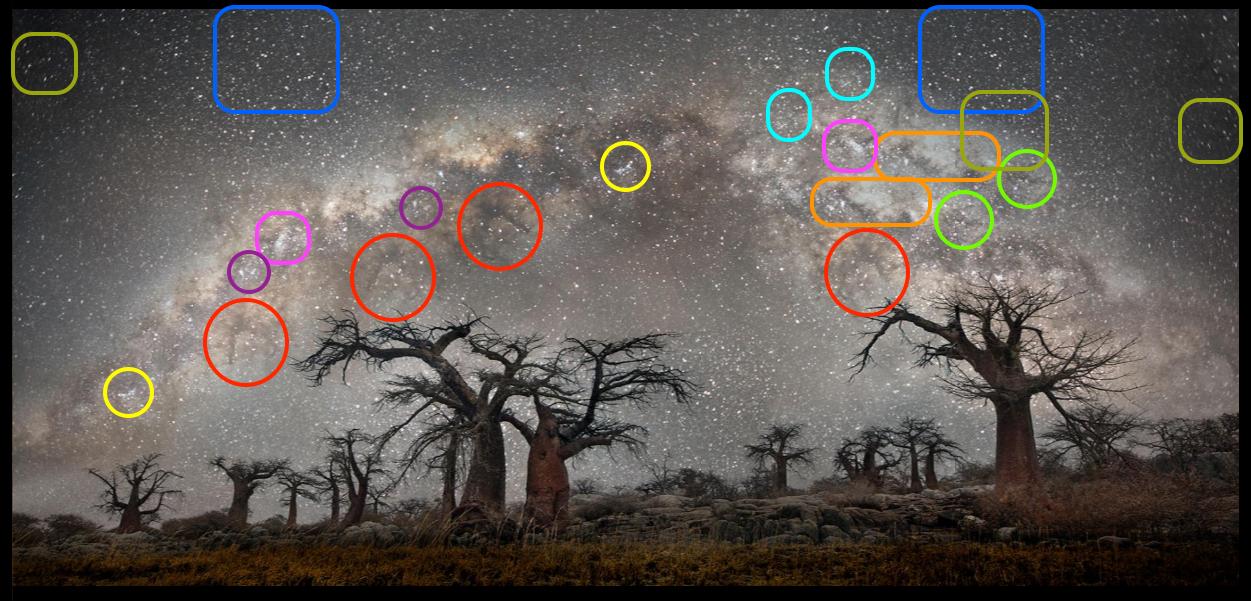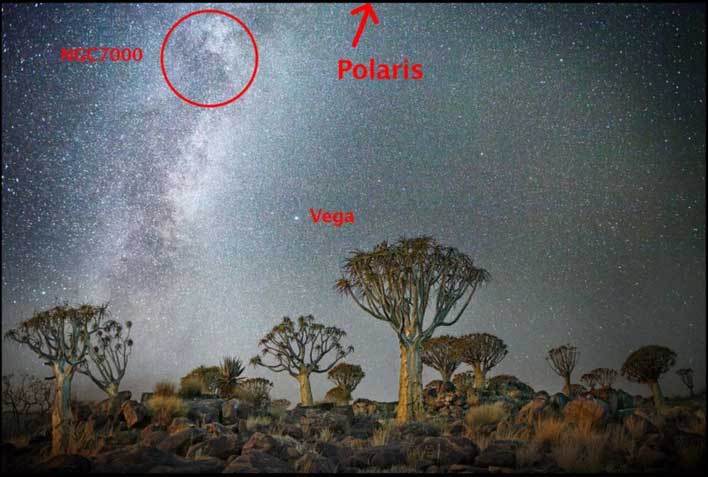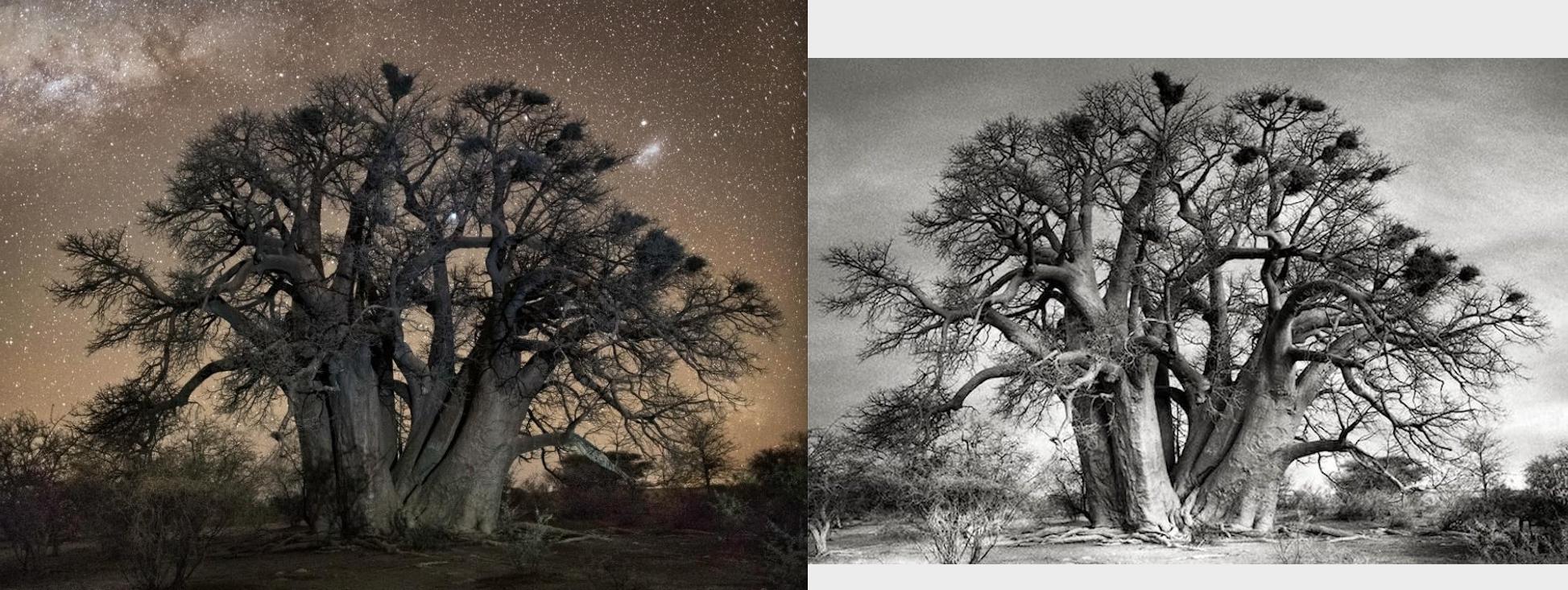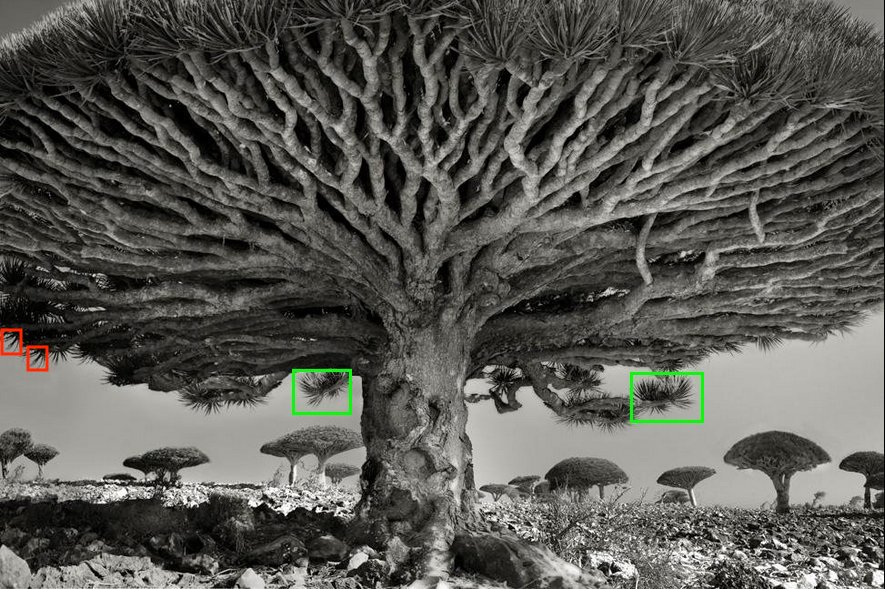National Geographic has removed an article featuring landscape images by renowned US photographer, Beth Moon, due to widespread claims the night sky is a ‘composite’. While Moon denies any wrongdoing, eagle-eyed observers are finding more photos with signs of heavy post-processing.

Astrophotographers initially alerted National Geographic to the photos with an apparent ‘fake night sky’ behind old trees, part of Moon’s ongoing series Diamond Nights and Ancient Skies – Ancient Trees.
Rather than promoting her work strictly through art-based publications, Moon’s pictures often receive publicity from science and nature magazines, including Smithsonian Magazine and Wired. The articles frame the captures as a true representation of a setting, with Moon discussing the difficulty of perfecting exposures at certain locations, with no mention of heavy editing, cloning, or making night sky composites.
Similar articles have also been published by news organisations.
National Geographic has since published an editor’s note highlighting an investigation into Moon’s pictures to find if they have breached the magazine’s strict photo policy.
‘On April 26, National Geographic published photos by Beth Moon on nationalgeographic.com, depicting the world’s oldest trees against the night sky. Significant concerns about the veracity of the images have been raised on photo industry blogs and social media.’
‘We have removed the images and related story pending the outcome of our investigation. This step does not mean we have determined that the images do not meet our standards, as we are unable to make a determination at this time. The images will not be re-posted unless they meet National Geographic’s standards.’
Beth Moon has done a ‘Steve McCurry’ by blaming her intern, who apparently batch processed the images and hand-stitched the panoramas. Moon claims the clone tool was not used and the sky is legitimate.
‘I am late to this discussion as I am attending my father’s funeral. First, I want to say that I am not much for technical expertise. For me, it’s not about the equipment. For these pictures I developed a fairly simple formula and memorised it, varying adjustments occasionally to suit the light. I also usually take my time producing work, but this work under starlight was the exception. With three back to back trips and a book deadline I enlisted the help of an intern seven years ago. During her six-month term she helped to batch process images and she also hand-stitched the panoramic shot in question. I got back in touch with her to ask her about this process. She remembers stitching the images together one by one, lining up the tree branches by using the transformation tool to line each shot up. I believe the problem stemmed from the distortion of the wide angle lens used. She claims she did not use the clone tool. To be clear, I am not passing the blame on to her. My name is on it and I take full responsibility.
This is a painful lesson. I am sorry to have upset so many people. I did not intentionally try to hide anything and I apologise. With the passing of my father I am reminded to try to concentrate on a bigger picture, which I hope to do going forward.’
But astrophotographers are certain the manipulated images can only have been achieved through significant alterations of the night sky. Read the caption for the image below, for instance.

Adrien Maduit has made similar observations for five other images, comparing constellation positions with the location which suggests Moon (or intern) cloned parts or the entire sky.
Speaking with Inside Imaging, Maduit stressed there’s no problem with Moon’s creative process. There’s no rules for making photo art. But he takes issue with National Geographic breaching its strict photo publishing standards.
US microbiologist, Elisabeth Bik, is an expert at spotting image manipulation. She has since done some digging to find this may be the tip of the iceberg.

Bik has found cloning in digital copies of Moon’s palladium prints, an alternative process which she is renowned for using.

Moon prefers to market her photos as authentic representations of a scene, but the allegations against her suggest this isn’t the case.
It’s ambitious for a photographer to believe an internet-sized audience can be misled and not pick up on doctored elements. Yet the reality is that respected photographers like Moon, Lisa Saad, and Steve McCurry are willing to risk it all by omitting crucial details behind their creative process.





Beth Moon tricked me.
Now apply this to prolly 99% of NASA’s ‘work output’ ie ‘blue marble’, ‘outer space’, ‘views of Earth,’ ‘satellites’, ‘Mars’ my arse! So the question then becomes – then where’s all that horrendous amount of money going every single year?? Time to wake, shake the sleep off n band w eachother and bring their war on perception home to them now fam..